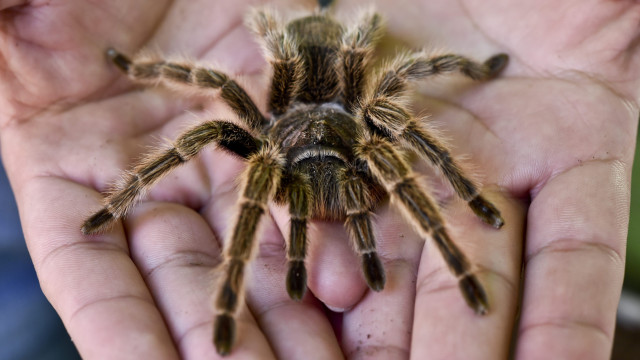



























See Also
See Again
© Shutterstock
0 / 28 Fotos
Eggs
- The first thing to know about eggs is that they may contain salmonella. Cooking them can help kill those bacteria, but it doesn't always get rid of all of them.
© Shutterstock
1 / 28 Fotos
Eggs
- Leaving cooked eggs at room temperature for any length of time allows bacteria to multiply, allowing them to become harmful.
© Shutterstock
2 / 28 Fotos
Eggs
- From a safety perspective, it's better to eat eggs straight off the pan. Not to mention the fact that they taste much better that way, too!
© Shutterstock
3 / 28 Fotos
Beets
- Next up, we have beets, which are high in nitric oxide. The presence of this compound is helpful in the sense that it can give your workout a boost.
© Shutterstock
4 / 28 Fotos
Beets
- However, studies show that when foods high in nitrates are cooked, partially cooled, and then reheated, the nitrates can become nitrites, and then nitrosamines.
© Shutterstock
5 / 28 Fotos
Beets
- Certain nitrosamines are known to be carcinogenic, so it may be best to avoid reheating beets. It is a good idea to steer clear of reheated turnips, too.
© Shutterstock
6 / 28 Fotos
Potatoes
- Potatoes are another food that should not be cooked, sit at room temperature, and then consumed. Again, it's a question of bacteria.
© Shutterstock
7 / 28 Fotos
Potatoes
- In the case of potatoes, the concern is not about salmonella, but a bacteria called clostridium botulinum, which causes a rare but serious condition called botulism.
© Shutterstock
8 / 28 Fotos
Potatoes
- According to experts, foil-wrapped baked potatoes are particularly risky, because they offer the ideal low-oxygen environment for the bacteria to thrive.
© Shutterstock
9 / 28 Fotos
Spinach
- Spinach joins beets in the list of nitrate-high foods that are more safely enjoyed raw. Not only is it safer, but it's also quicker to eat spinach without cooking it.
© Shutterstock
10 / 28 Fotos
Spinach
- It is also important to note that, according to research, nitrites, which are produced when you heat foods high in nitrates, are not safe for infants less than six months old.
© Shutterstock
11 / 28 Fotos
Spinach
- Spinach is often mixed into baby foods, even if it is not listed as the main ingredient. It is therefore a good idea to check and, if in doubt, avoid heating baby puree.
© Shutterstock
12 / 28 Fotos
Rice
- In the 1970s, there were a number of food poisoning outbreaks that, after investigation, were attributed to eating leftover rice.
© Shutterstock
13 / 28 Fotos
Rice
- The problem with eating leftover rice is that it harbors a microorganism called Bacillus cereus, which multiples when rice is kept at room temperature.
© Shutterstock
14 / 28 Fotos
Rice
- That does not mean to say you need to throw away all your leftover rice. Instead, it should be quickly stored in the fridge and not reheated.
© Shutterstock
15 / 28 Fotos
Chicken
- Just like their eggs, chickens themselves are a breeding ground for salmonella. When cooked and then left at room temperature, the bacteria will multiply.
© Shutterstock
16 / 28 Fotos
Chicken
- The best way to avoid exposing yourself to danger when reheating chicken is to make sure that it reaches a temperature of 165°F (73°C).
© Shutterstock
17 / 28 Fotos
Chicken
- Bear in mind that microwaves don't heat as evenly as other cooking methods, such as ovens.
© Shutterstock
18 / 28 Fotos
Oily foods
- If you've ever tried reheating oily foods, such as French fries, you'll know that they don't taste so great the second time around. However, that's not the only reason to avoid doing this.
© Shutterstock
19 / 28 Fotos
Oily foods
- Studies show that reheating oily foods in the microwave can cause the oil to smoke past a safe level. This can produce fumes that are hazardous to human health.
© Shutterstock
20 / 28 Fotos
Oily foods
- If you really have to reheat your oil-heavy takeaway, be sure to use your oven rather than a microwave, and set it to a low temperature.
© Shutterstock
21 / 28 Fotos
Buffet food
- Have ever wondered why buffet restaurants are so strict about not letting customers take food home? It's not only their bottom-line they're concerned with.
© Shutterstock
22 / 28 Fotos
Buffet food
- Buffet restaurants are aware that trays are not kept hot enough to kill microbes. This means the microbes tend to multiply as the food sits out.
© Shutterstock
23 / 28 Fotos
Buffet food
- It is therefore a good idea to avoid buffet food that has been sitting out. This goes for at-home buffets as well as restaurant buffets.
© Shutterstock
24 / 28 Fotos
Seafood
- Seafood is packed full of useful nutrients and most people don't eat enough of it. Part of the reason is that it carries a high risk of food poisoning.
© Shutterstock
25 / 28 Fotos
Seafood
- According to the Food and Drug Administration (FDA), the bacteria that causes illness thrives in warm temperatures (between 40 and 140°F or 4 and 60°C).
© Shutterstock
26 / 28 Fotos
Seafood
- To consume leftover seafood safely, be sure to place it in the fridge in less than two hours after it has been prepared. The limit should be one hour when room temperature is above 90°F (32°C). See also: Molecular gastronomy–the science behind the art of cooking
Sources: (Reader's Digest)
© Shutterstock
27 / 28 Fotos
© Shutterstock
0 / 28 Fotos
Eggs
- The first thing to know about eggs is that they may contain salmonella. Cooking them can help kill those bacteria, but it doesn't always get rid of all of them.
© Shutterstock
1 / 28 Fotos
Eggs
- Leaving cooked eggs at room temperature for any length of time allows bacteria to multiply, allowing them to become harmful.
© Shutterstock
2 / 28 Fotos
Eggs
- From a safety perspective, it's better to eat eggs straight off the pan. Not to mention the fact that they taste much better that way, too!
© Shutterstock
3 / 28 Fotos
Beets
- Next up, we have beets, which are high in nitric oxide. The presence of this compound is helpful in the sense that it can give your workout a boost.
© Shutterstock
4 / 28 Fotos
Beets
- However, studies show that when foods high in nitrates are cooked, partially cooled, and then reheated, the nitrates can become nitrites, and then nitrosamines.
© Shutterstock
5 / 28 Fotos
Beets
- Certain nitrosamines are known to be carcinogenic, so it may be best to avoid reheating beets. It is a good idea to steer clear of reheated turnips, too.
© Shutterstock
6 / 28 Fotos
Potatoes
- Potatoes are another food that should not be cooked, sit at room temperature, and then consumed. Again, it's a question of bacteria.
© Shutterstock
7 / 28 Fotos
Potatoes
- In the case of potatoes, the concern is not about salmonella, but a bacteria called clostridium botulinum, which causes a rare but serious condition called botulism.
© Shutterstock
8 / 28 Fotos
Potatoes
- According to experts, foil-wrapped baked potatoes are particularly risky, because they offer the ideal low-oxygen environment for the bacteria to thrive.
© Shutterstock
9 / 28 Fotos
Spinach
- Spinach joins beets in the list of nitrate-high foods that are more safely enjoyed raw. Not only is it safer, but it's also quicker to eat spinach without cooking it.
© Shutterstock
10 / 28 Fotos
Spinach
- It is also important to note that, according to research, nitrites, which are produced when you heat foods high in nitrates, are not safe for infants less than six months old.
© Shutterstock
11 / 28 Fotos
Spinach
- Spinach is often mixed into baby foods, even if it is not listed as the main ingredient. It is therefore a good idea to check and, if in doubt, avoid heating baby puree.
© Shutterstock
12 / 28 Fotos
Rice
- In the 1970s, there were a number of food poisoning outbreaks that, after investigation, were attributed to eating leftover rice.
© Shutterstock
13 / 28 Fotos
Rice
- The problem with eating leftover rice is that it harbors a microorganism called Bacillus cereus, which multiples when rice is kept at room temperature.
© Shutterstock
14 / 28 Fotos
Rice
- That does not mean to say you need to throw away all your leftover rice. Instead, it should be quickly stored in the fridge and not reheated.
© Shutterstock
15 / 28 Fotos
Chicken
- Just like their eggs, chickens themselves are a breeding ground for salmonella. When cooked and then left at room temperature, the bacteria will multiply.
© Shutterstock
16 / 28 Fotos
Chicken
- The best way to avoid exposing yourself to danger when reheating chicken is to make sure that it reaches a temperature of 165°F (73°C).
© Shutterstock
17 / 28 Fotos
Chicken
- Bear in mind that microwaves don't heat as evenly as other cooking methods, such as ovens.
© Shutterstock
18 / 28 Fotos
Oily foods
- If you've ever tried reheating oily foods, such as French fries, you'll know that they don't taste so great the second time around. However, that's not the only reason to avoid doing this.
© Shutterstock
19 / 28 Fotos
Oily foods
- Studies show that reheating oily foods in the microwave can cause the oil to smoke past a safe level. This can produce fumes that are hazardous to human health.
© Shutterstock
20 / 28 Fotos
Oily foods
- If you really have to reheat your oil-heavy takeaway, be sure to use your oven rather than a microwave, and set it to a low temperature.
© Shutterstock
21 / 28 Fotos
Buffet food
- Have ever wondered why buffet restaurants are so strict about not letting customers take food home? It's not only their bottom-line they're concerned with.
© Shutterstock
22 / 28 Fotos
Buffet food
- Buffet restaurants are aware that trays are not kept hot enough to kill microbes. This means the microbes tend to multiply as the food sits out.
© Shutterstock
23 / 28 Fotos
Buffet food
- It is therefore a good idea to avoid buffet food that has been sitting out. This goes for at-home buffets as well as restaurant buffets.
© Shutterstock
24 / 28 Fotos
Seafood
- Seafood is packed full of useful nutrients and most people don't eat enough of it. Part of the reason is that it carries a high risk of food poisoning.
© Shutterstock
25 / 28 Fotos
Seafood
- According to the Food and Drug Administration (FDA), the bacteria that causes illness thrives in warm temperatures (between 40 and 140°F or 4 and 60°C).
© Shutterstock
26 / 28 Fotos
Seafood
- To consume leftover seafood safely, be sure to place it in the fridge in less than two hours after it has been prepared. The limit should be one hour when room temperature is above 90°F (32°C). See also: Molecular gastronomy–the science behind the art of cooking
Sources: (Reader's Digest)
© Shutterstock
27 / 28 Fotos
Potential health risks of certain leftovers
Foods you should never reheat
© Shutterstock
If you are someone who likes to cook in quantity, you know just how important leftovers can be. Whether you need a quick lunch or a midnight snack, the bits left over from your last cooking session can often save the day. But did you know there are certain foods that should be eaten straight away and that should not be consumed as leftovers if you want to avoid getting sick? Find out which ones by clicking through this gallery.
RECOMMENDED FOR YOU




































MOST READ
- Last Hour
- Last Day
- Last Week








